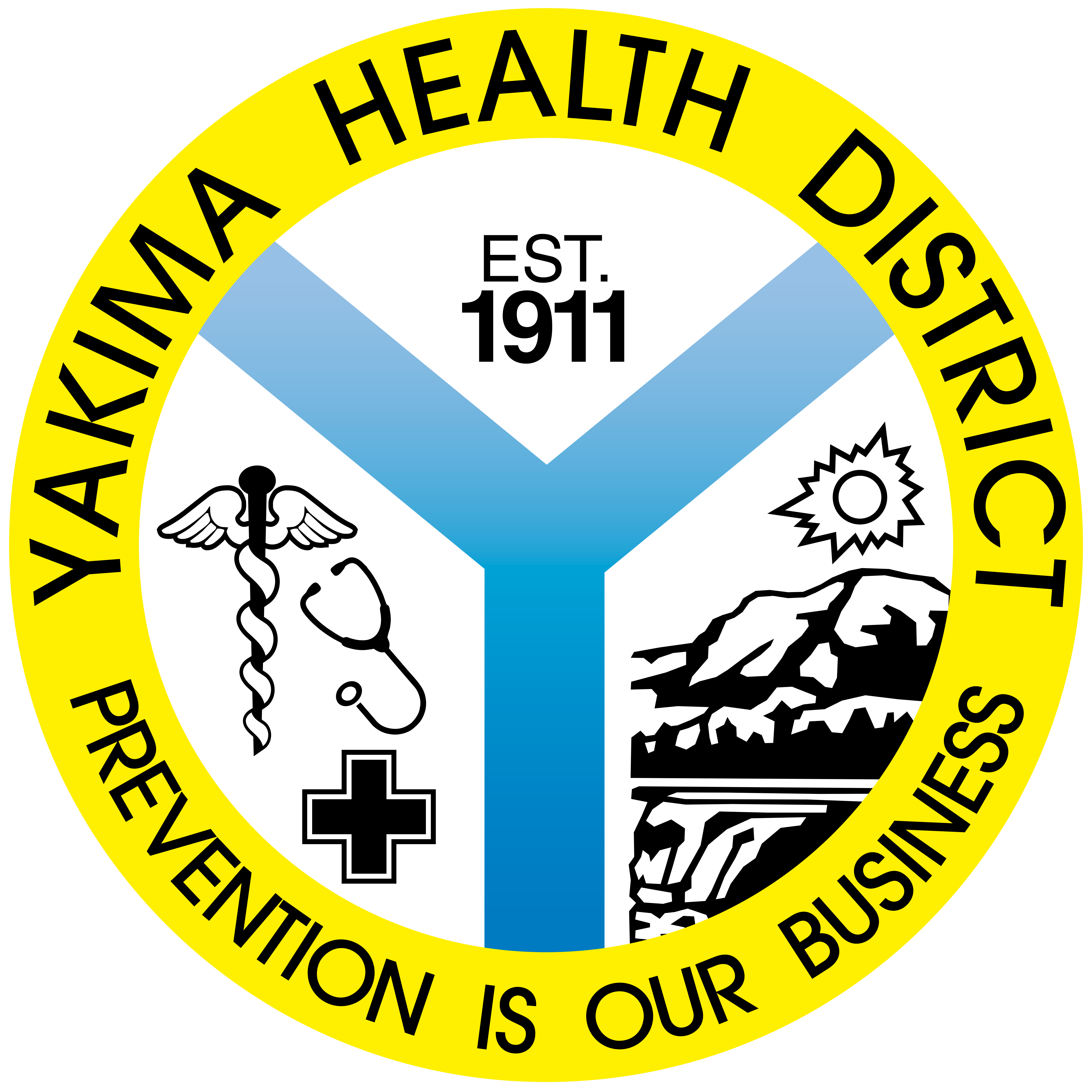
**Clinical leadership is expected to schedule time to review guidelines with staff**
Questions? Contact: Melissa Sixberry, Director of Disease Control, 509-249-6509
Requested actions:
- Screen patients for suicide risk, particularly children, teens, and young adults. See the Screening section below for more information.
- Share information and resources with patients and their families on crisis support, suicide warning signs, and suicide risk factors. See the Resources section below for more information.
Background.
A convergence of factors may be leading to an increased risk of suicide attempts, suicidal ideation, and psychological distress among youth in Washington, including:
- The extended disillusionment phase[1] of disaster for the COVID-19 pandemic, which is typically the disaster phase with the greatest behavioral health impacts.
- Other effects related to the pandemic, such as disruption of two academic years, economic impacts, and social isolation.
- Seasonal changes, such as reduced daylight hours and winter weather conditions.
Nationally, the Centers for Disease Control and Prevention (CDC) estimates that one in four people under age 18 have struggled with suicidal thoughts since the beginning of the pandemic.[2] Moreover, over twice as many adults reported having serious thoughts of suicide in the previous 30 days in June 2020 (10.7%) compared to the previous 12 months in 2018 (4.3%).2 Rates were particularly high among certain populations, including young adult respondents aged 18–24 (25.5%), Hispanic respondents (18.6%), Black respondents (15.1%), and essential workers (21.7%).2 As a result, the CDC recommends community-level intervention and prevention to address this concern.
Screening.
We recommend using the National Institute of Mental Health’s Ask Suicide-Screening Questions (ASQ) Screening Tool for patients ages 10–24.[3] For example, ask patients if they have:
- Current or recent suicidal ideation.
- Determine the frequency, intensity, and duration of suicidal thoughts.
- Past suicidal ideation or attempts.
- Assess historical patterns of behavior to help determine risk.
- A plan.
- Determine timing, location, and lethality.
- The means or access to carry out the plan.
- Ask about availability of means (i.e., types of harm) to complete suicide, such as drowning, cutting, poisoning, jumping, etc.
- Ask about access to methods to complete suicide, such as medications, household materials (e.g., bleach, poisons, rope, or cleaning agents), or firearms.
- The intention to carry out the plan.
- Explore how they envision carrying out their plan, and to what degree they believe the plan to be lethal versus harmful.
- Protective factors.
- Ask about connectedness to family, friends, community, and culture.
- Assess skills, including the ability to cope, problem solve, or engage in conflict resolution.
- Determine access to medical and mental healthcare.
Prepare for Screening and Supporting Patients and Families
Having information readily available and accessible will help providers advise young people who are struggling with suicidal thoughts or actions and their families. Parents may need counseling on safety planning and should be provided information and contact numbers on how to access crisis outreach, if needed. Contact information and resources for providers, patients, and families are listed on the following pages in the Resources section.
The COVID-19 pandemic has created difficulty in accessing behavioral health care, as behavioral health providers are seeing a surge in new patients. Parents should be counseled that it may take some time before their child can get into treatment, and it may be helpful to discuss interim planning with them. For example, an option can be offering follow-up appointments as a way of monitoring and supporting until the patient can begin behavioral health treatment.
Sometimes young people in crisis may not agree to treatment. Parents should be provided information on how involuntary treatment works in Washington, including the need for a designated crisis outreach provider to assess and make the determination. Inform yourself about these processes and gather contact information for designated crisis responders. Additionally, provide counseling and information for parents on safety planning and actions for reducing access to methods of self-harm in their homes.
To help increase emotional health, we encourage everyone to work on building resilience. Whenever possible, encourage patients and clients to access their support network for assistance, and consider facilitating that connection with the patient’s permission.
Suicide Warning Signs
Everyone can play a role in suicide prevention. Know the suicide warning signs:
- A history of suicide attempt(s)
- Current talk of suicide or making a plan
- Strong wish to die or a preoccupation with death
- Giving away prized possessions
- Signs of depression, such as moodiness, hopelessness, or withdrawal
- Increased alcohol and/or other substance use
- Hinting at not being around in the future or saying goodbye
Suicide Risk Factors
Ask patients about the following risk factors for suicide:
- Unsecured firearms
- Recent loss or trauma
- Accessible medications or substances in the home
- Social isolation
- Hopelessness for the future
Although there is stigma around discussing suicide, research shows it is best to ask about suicide directly. Ask patients candidly if they have had thoughts or feelings about suicide and if they are a danger to themselves. Asking about suicide does not increase risk and, in fact, increases safety.
Resources
For Providers:
- Seattle Children’s Partnership Access Line (consultation about child patients):
Call 866-599-7257, or visit https://www.seattlechildrens.org/healthcare-professionals/access-services/partnership-access-line/wa-pal/. - Psychiatry Consultation Line (PCL) (consultation about adult patients):
Call 877-927-7924, or visit https://psychiatry.uw.edu/clinical-care-consultation/provider-consultation/psychiatry-consultation-line-pcl-faqs/. - Seattle Children’s Safe Storage for Firearms:
https://www.seattlechildrens.org/health-safety/keeping-kids-healthy/prevention/firearm-safety/
- Training for Providers on Suicide Safety
https://saferhomescoalition.org - Local Options for Safe Temporary Firearms Storage
https://hiprc.org/firearm/firearm-storage-wa/ - Suicide Prevention Lifeline – We Can All Prevent Suicide
https://suicidepreventionlifeline.org/how-we-can-all-prevent-suicide/ - Suicide Prevention Resource Center
https://www.sprc.org/ - Department of Health – Behavioral Health Resources and Recommendations
https://www.doh.wa.gov/Emergencies/COVID19/HealthcareProviders/BehavioralHealthResources
For Patients and Families:
- Washington Mental Health Crisis Services
https://www.hca.wa.gov/health-care-services-supports/behavioral-health-recovery/mental-health-crisis-lines - National Suicide Prevention Lifeline: Call 800-273-8255 (English) or 1-888-628-9454 (Español).
- Crisis Text Line: Text HEAL to 741741.
- Crisis Connections: Call 866-427-4747.
- TeenLink: Call or text 866-833-6546.
- Crisis Lines for Specific Groups
https://www.doh.wa.gov/YouandYourFamily/InjuryandViolencePrevention/SuicidePrevention/HotlinesTextandChatResources - Washington Warm Line: Call 877-500-9276.
- WA Listens (support line for stress related to COVID-19):Call 1-833-681-0211.
- Washington Recovery Help Line (help line for substance use): Call 1-866-789-1511 (24/7).
- Washington State COVID-19 Response – Mental and emotional well-being webpage:
https://coronavirus.wa.gov/information-for/you-and-your-family/mental-and-emotional-well-being - Teens, Depression and Firearms Tips for Parents:
https://www.seattlechildrens.org/health-safety/keeping-kids-healthy/prevention/teens-depression-and-firearms/ - Safety Checklist for Homes:
https://www.seattlechildrens.org/health-safety/keeping-kids-healthy/prevention/home-checklist/
[1] For a description of each phase in the disaster timeline, refer to page 5 of the COVID-19 Behavioral Health Group Impact Reference Guide (https://www.doh.wa.gov/Portals/1/Documents/1600/coronavirus/BHG-COVID19BehavioralHealthGroupImpactReferenceGuide.pdf).
[2] Centers for Disease Control and Prevention. (2020, August 14). Mental Health, Substance Use, and Suicidal Ideation During the COVID-19 Pandemic — United States, June 24–30, 2020. https://www.cdc.gov/mmwr/volumes/69/wr/mm6932a1.htm
[3] National Institute of Mental Health. (2020). NIMH Ask Suicide-Screening Questions (ASQ) Toolkit. https://www.nimh.nih.gov/research/research-conducted-at-nimh/asq-toolkit-materials/asq-tool/screening_tool_asq_nimh_toolkit_155867.pdf.
